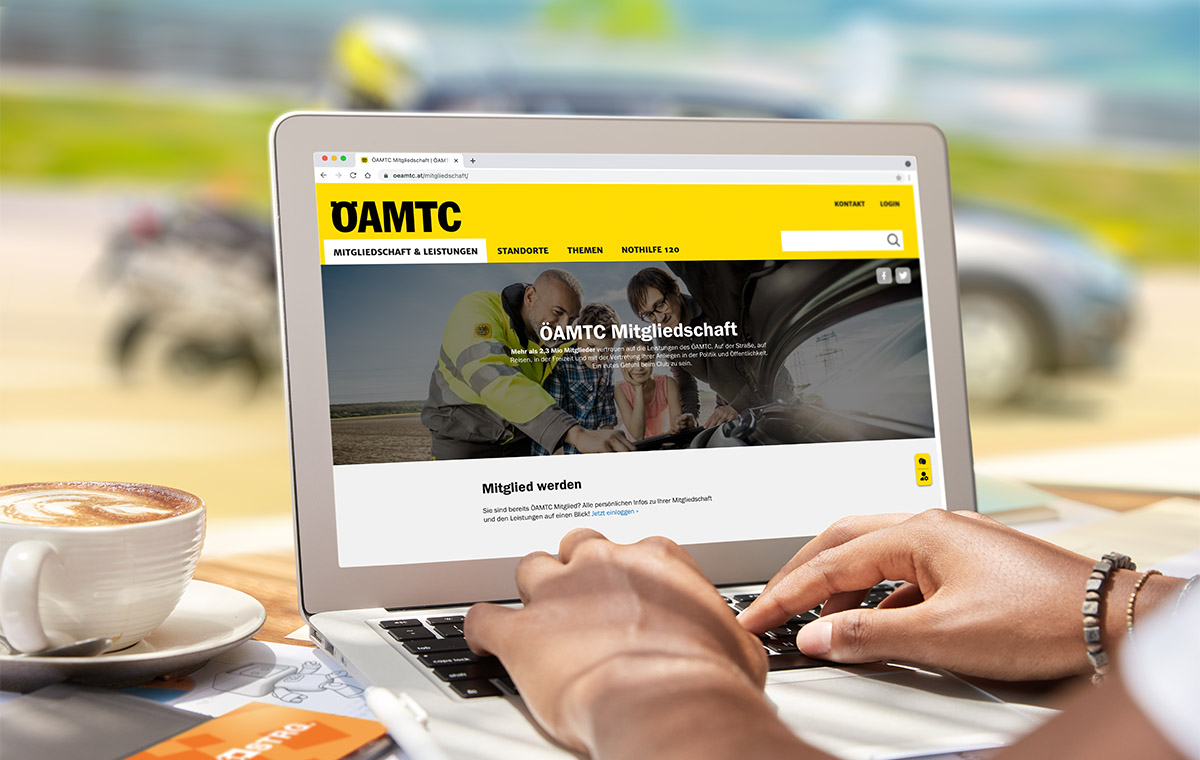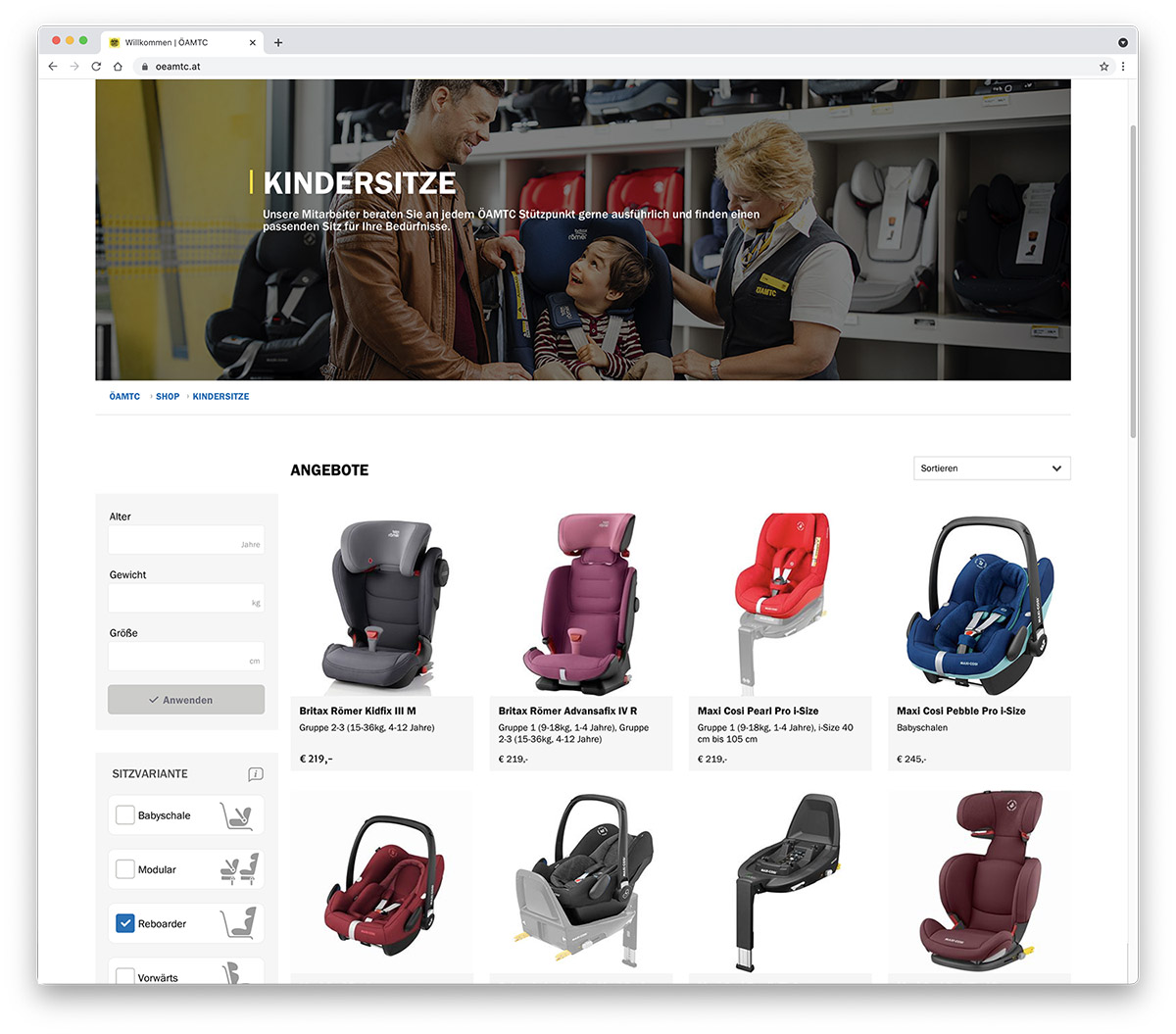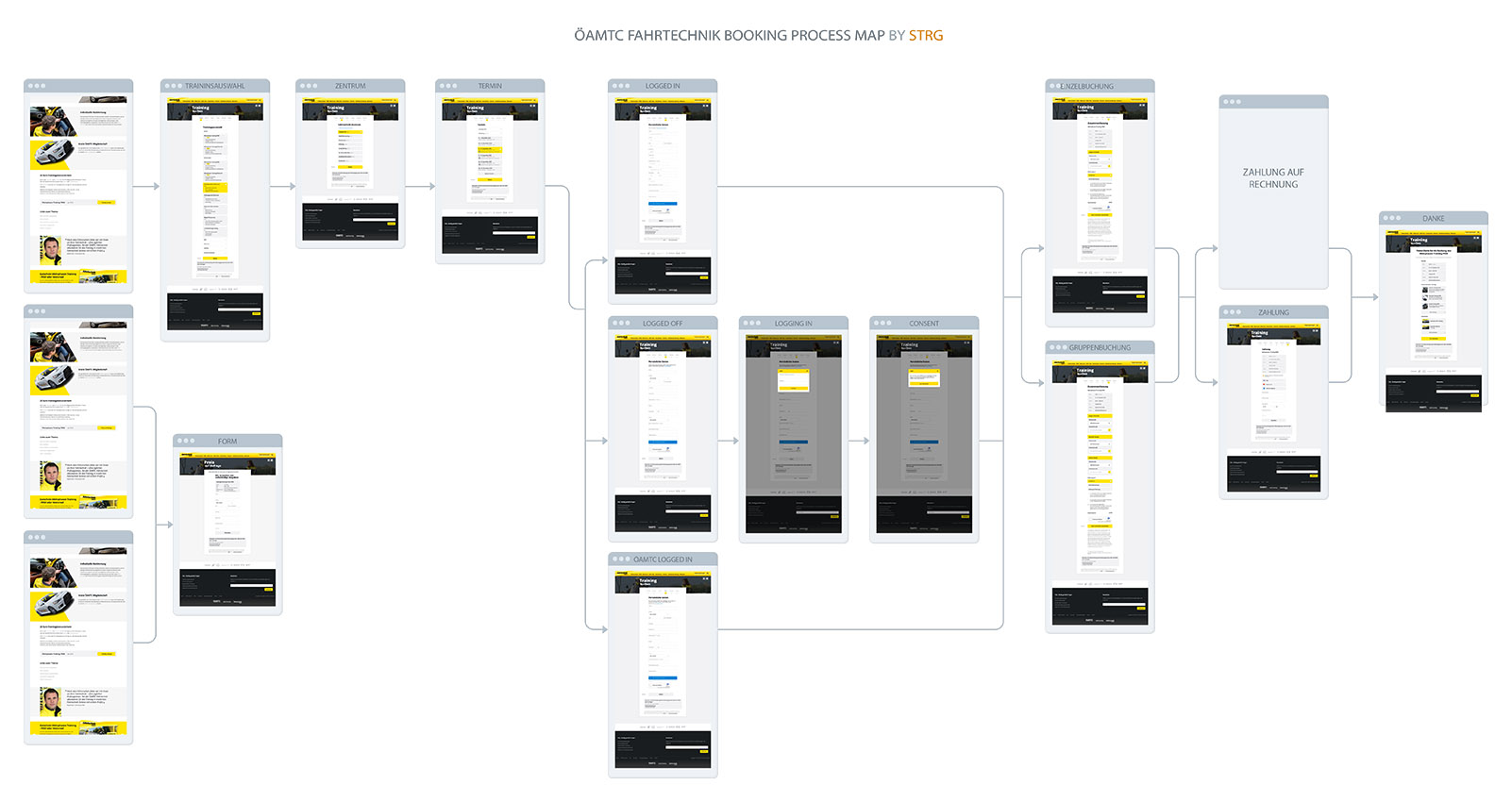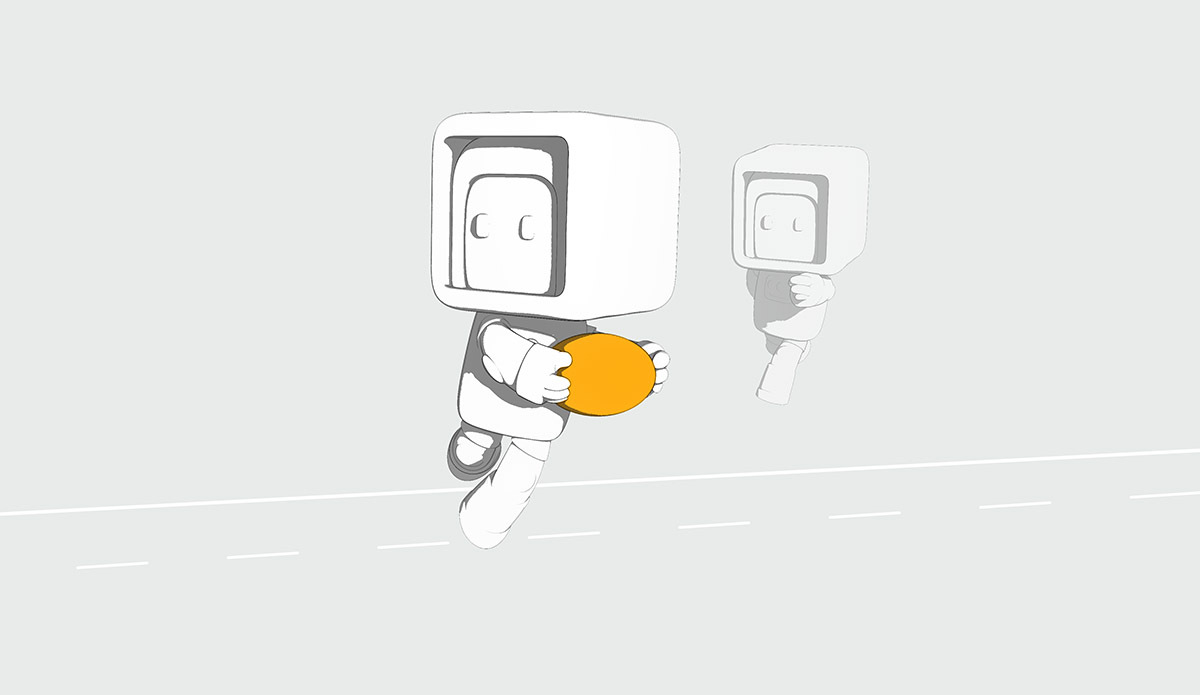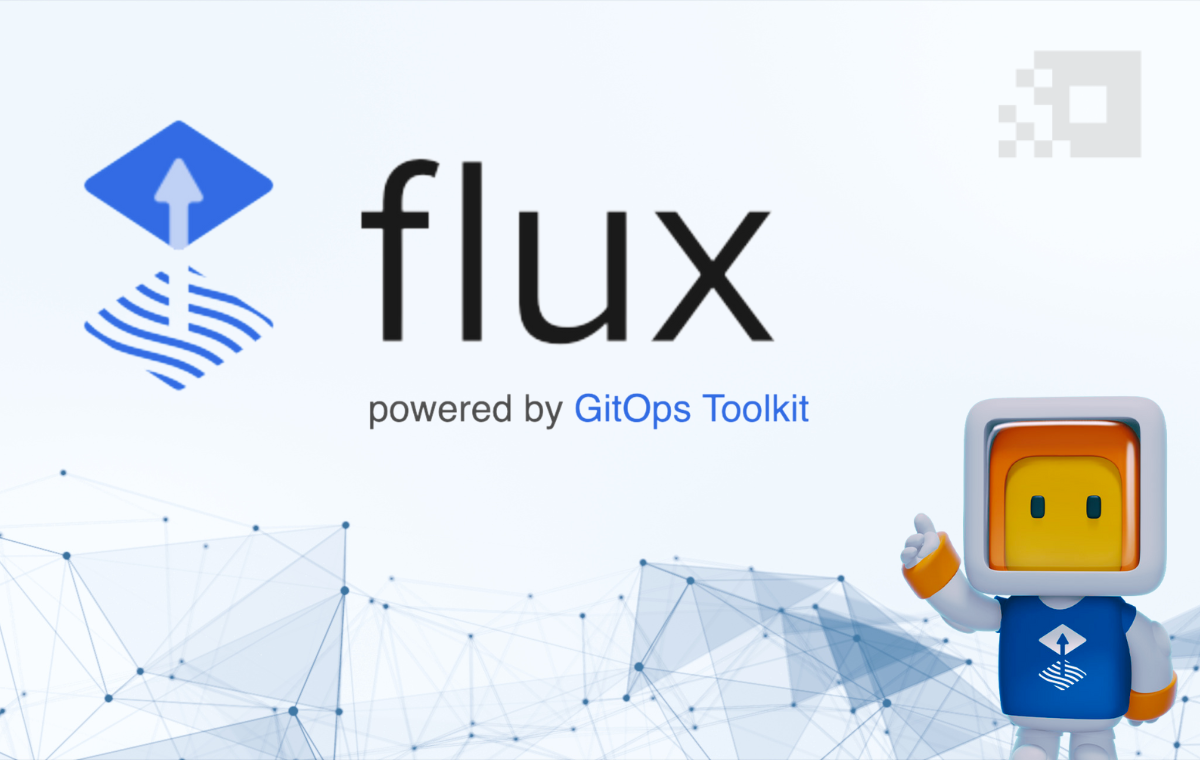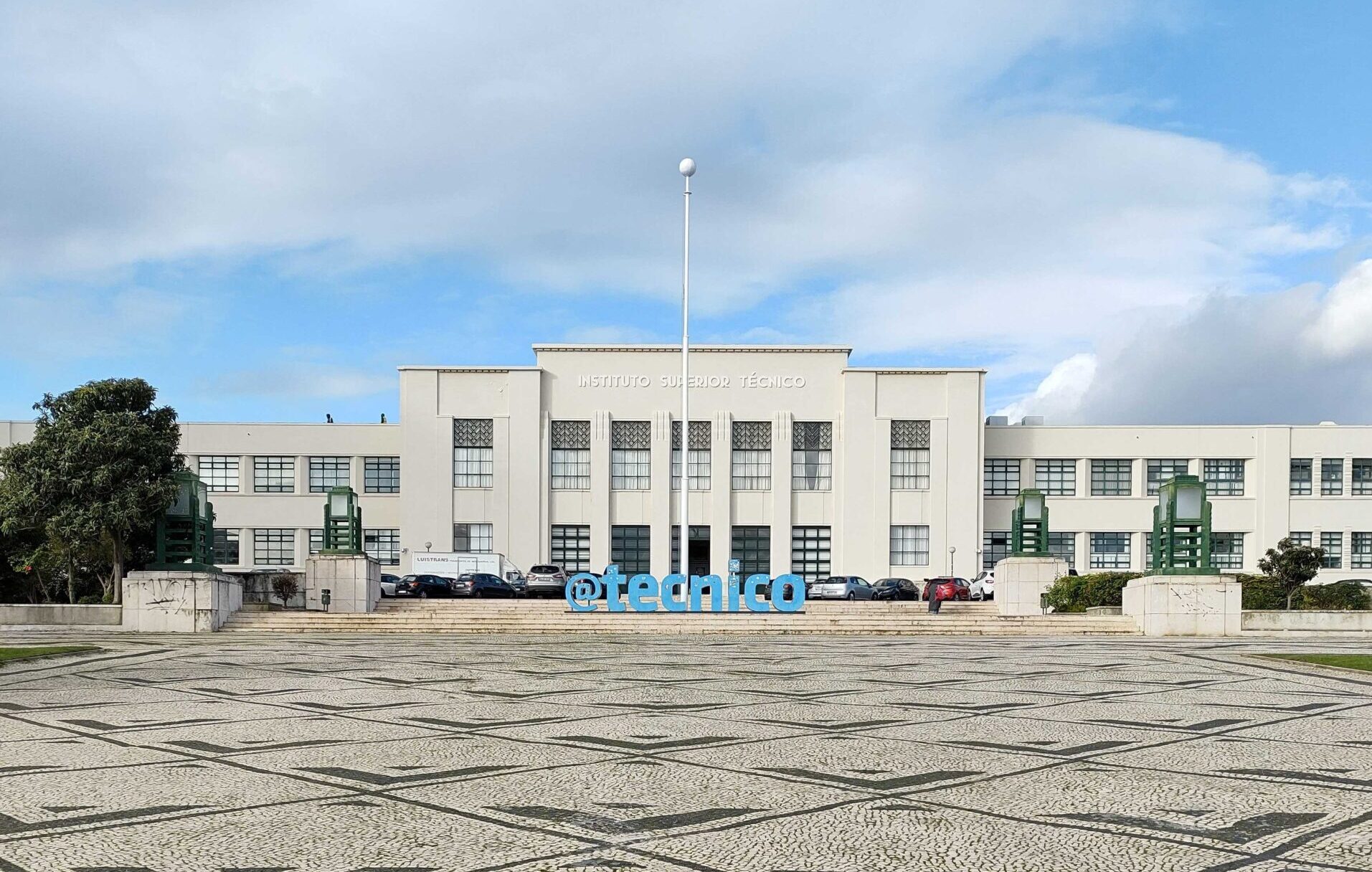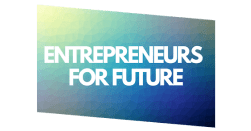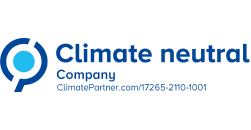A Transformational Partnership
Since 2013, STRG has earned ÖAMTC’s trust by partnering with them to create a strategic concept for their digital transformation, launch an online version of their auto touring print magazine, maximise their topic leadership, streamline their internal knowledge management, and implement several successful digital products and services.
Built upon a solid foundation of trust and transparency, our partnership continues to evolve and grow. Our work with ÖAMTC is a blueprint for how we work with our clients.
The ÖAMTC (Austrian Automobile, Motorcycle and Touring Club) is an independent nonprofit association that supports mobility and travel. To date, ÖAMTC has over 2.3 million members who rely upon their expert road-safety, travel, leisure or other general services. Originally founded as a bicycle and automobile touring club at the end of the 19th century, the club has evolved with the subsequent changes in mobility. Setting their sights on a future where traditional modes of transportation will certainly be disrupted (e.g., by self-driving electric cars, overall reduced car ownership, data-driven auto maintenance, etc.), the club is prepared to evolve further, focusing more on mobile people rather than their vehicles. Structurally, the national club is an umbrella covering seven regional associations. The ÖAMTC finances itself exclusively through membership fees and revenues from its various services (travel agency, insurance, financial services, …). It receives no government subsidies.
About the ÖAMTC
The origins of our long-term partnership
The association originally contracted with STRG to design and implement a digital strategy for their magazine auto touring. Conceived as a ‘mobility lifestyle magazine,’ the print version is published eleven times a year and sent out to all ÖAMTC members. With a circulation of approximately 2,800,000 readers per issue, it is Austria’s most accessible motorist magazine.
We worked together with the auto touring team to create a detailed concept plan that would allow the content to be published in a “glossy” digital format. The initial step was to create a publishing engine based on STRG.CMS, which can format articles in 1,400 different layout combinations. It was also necessary to adapt our out-of-the-box CMS solution to their in-house systems, including their back-office SAP.
The online version of auto touring was launched in 2014-15, and received excellent feedback. “ÖAMTC saw that we passed the test, that we could listen to them and help them transform their ideas into a solid digital communications strategy,” says STRG’s COO, Michael Dosser. ÖAMTC decided to partner with STRG to relaunch its entire web portal and transform its external and internal communications.
Topic leadership
Traditionally focused on automotive mobility, ÖAMTC is aware that their sector will evolve radically over the next 10 to 15 years. Their external communications strategy needed to reflect this to ensure the association’s central role in the future.
STRG did more than ‘simply’ implement a software solution for publishing. We helped their editorial team to rethink its entire content strategy. “ÖAMTC benefits from topic leadership in Austria, but they weren’t really taking full advantage of this,” recalls Dosser. “They had created a lot of excellent original content, but we saw no connection between the content and marketing their products and services.”
Dosser and his team noticed that “many articles had very similar content — quite self-defeating from an SEO standpoint. Before digitising the existing print content, we sifted through thousands of articles and decided that only a few hundred were focused on their core topics and were SEO-friendly. The rest would have to be rebuilt from scratch.”
Instead of just indexing the existing print articles as is, we helped the editorial team to deconstruct the articles’ content into core topics and then standardized the structure of each topic, so that each was contained in its own directory. A professional editor from one of Austria’s top daily newspapers was brought on, and he worked with the club’s editorial team to rebuild the content from the ground up, spicing up the text with graphics, video and slideshows.To maintain a cohesive tone throughout the large number of projects, we developed a general style guide, which serves as the basis for all future concepts. Together with the editorial departments of the individual service departments, we organised extensive workshops and forged ahead with the planning to present a “content-to-service-to-product” path across all levels. This editorial consulting, in combination with a unified graphic concept, led to a rapid deployment of subsequent projects.
From content to product
A big goal of our efforts was connecting the topics with their products and services. ÖAMTC’s central revenue source is from its annual memberships, augmented by other products and services, such as travel insurance, travel agency, vehicle inspection/maintenance, driver training, and sales of car/travel accessories.
Previously, ads for their products and services were interlaced with their website content, but “they were fed through a third-party ad server,” recalls Dosser. “Anybody with an ad-blocking browser wouldn’t even see them!”
Neither ÖAMTC or STRG wanted any kind of in-your-face advertising. Instead, we opted for a content-marketing strategy of integrating calls-to-action within the content itself, via links to members-only products and services. In order to maximize site traffic, a strict paywall approach was avoided. Instead, the content would subtly steer the casual visitor to the products and services on offer.
We also integrated their travel-agency services into the digital content so that personalised and context-dependent offers are displayed in all areas of the page. This led to a doubling of the online travel bookings and resulted in much stronger e-commerce activity on the pages.
Making members out of visitors
Since the main source of ÖAMTC’s revenue are its annual membership fees, a major goal behind all our implementations was to turn random visitors into members, and members into active consumers of their products and services. While excellent content would bring traffic to the site (mostly from existing members), getting visitors to engage further was our multi-layered strategy:
- 1st level: for the user who visits a page but hasn’t registered or logged on, push product offers and additional content according to his navigation patterns;
- 2nd level: get a user to register or log on (simply by providing his e-mail address), and push content that will entice him to become a dues-paying member;
- 3rd level: get an active member to log on in order to take advantage of special members-only products and services.
With this approach, we could gradually build visitors’ trust and turn them into customers.
One platform for all purposes, inside and out
By keeping their portal organised according to their core SEO-friendly topics, site traffic increased and visitors gained trust in the portal as a leading source of information on mobility issues. It also enabled STRG to implement a solution for ÖAMTC’s internal knowledge management — an intranet portal that mirrored content from the public platform.
For internal use, the public information was indexed like wikipedia pages are — less shiny and flashy, but better organised and more practical to access. “We also tied it together with the member data from the back-office systems,” says Dosser, “so an intranet user,” for example a customer rep, “could see the interests and activity of a member, what services or products they have purchased and what upselling opportunities there might be. It’s one platform for the whole organisation, with access rights granted according to levels of need, and completely integrated into their own infrastructure.”Overall, the system was well-received throughout the organisation and now functions as their central information and communication platform, serving not only the editorial staff but also their call centres, service points, travel agency and affiliated partners.
Integrating additional services and products
One of the many products ÖAMTC offers is Fahrtechnik — driving-skills instruction carried out at training centres located throughout the country. Courses range from hands-on training for a basic drivers’ license to intensive instruction on high-speed, inclement weather and off-road driving (for automobiles, motorcycles and oversized vehicles). Customers range from absolute beginners to professionals.
Our task was to launch a stand-alone website offering compelling multimedia content that would entice both members and non-members to register for courses. However, it was equally important that the stand-alone site be integrated with the main portal, both graphically and by cross-linking content.
This enabled integrated cross-marketing between all the platforms. For example, if a member logs onto the main site to schedule his annual vehicle inspection, he might receive a teaser promotion for a Fahrtechnik training course, and vice versa. Or perhaps an auto touring review of winter tires might contain an offer for a ‘snow & fun training’ course (as well as an offer for a weekend ski trip through ÖAMTC’s travel agency).
And wait, there’s even more!
To date, we have developed over 20 projects together with ÖAMTC ranging from internal knowledge management and intranet for all corporate divisions to the club’s classic B2C portals.
We have developed a new self-service area of the portal, enabling ÖAMTC members to create a user profile that facilitates their ability to book ÖAMTC services and products. By entering specific information about their vehicle, ÖAMTC is better equipped to provide customer-specific products and service, in turn.
While there is presently a ‘webshop’ showcasing various automotive and travel accessories (e.g., child seats, roof racks, luggage and road maps) sold through ÖAMTC service centres, we are expanding the platform’s e-commerce capabilities, which must be fully integrated with their back-office SAP systems and membership data.
With an eye to the future, additional projects are currently under development, including development of location-specific point-of-interest content, as well as capturing data collected by modern cars and using Artificial Intelligence to analyze the data, in order to predict maintenance needs and share data with manufacturers.
A model approach for all our clients
STRG’s Michael Dosser says, “ÖAMTC may be one of our biggest clients, but we go through the same concept planning process for all of our clients. At heart, it’s always about turning visitors into customers — not with in-your-face marketing, but with a smooth and engaging content approach.” STRG has proven its ability to work with a major client over several years on multilayered projects, helping them navigate a future where the only certainty is the necessity of adapting agilely to dynamic change.
If you would like to learn more about how STRG can help guide your organisation into the digital future, let’s have a chat!
Contact Jürgen Schmidt or Michael Dosser
Postscript: About the architecture
The system that we built for the ÖAMTC is certainly the most complex implementation of our content management system, STRG.CMS, and our entire technology stack. In this case, the CMS serves as a central Digital Asset Manager (DAM) for all digitally used content, ranging from the classic, but very “playful” articles on car touring and points of interest (POI), to the collective knowledge-base content and e-commerce products. All content can be interlinked and can also be used in all subprojects. The user administration interface accesses the central member administration and exchanges data constantly. Of course, GDPR compliance was of great importance and all processes were mapped accordingly.
To manage the individual sections of the portal, the editors themselves can access most workflows and user-journey data. A WYSIWYG editor made available for this purpose allows automated and/or manual editing. The system has 12 pre-systems connected via bidirectional interfaces. For the payout from the DAM, a proprietary content API has been developed to operate the entire system headless. Since 2016, the front ends have been implemented with VUE.js, resulting in a more natural user interface and system distribution through its server environment. Due to its overall scope, ÖAMTC operates its own data centre in which all services are hosted and operated.
- Call STRG's CEO Jürgen, or write a mail juergen.schmidt@strg.at Mobile: +43 699 1 7777 165
